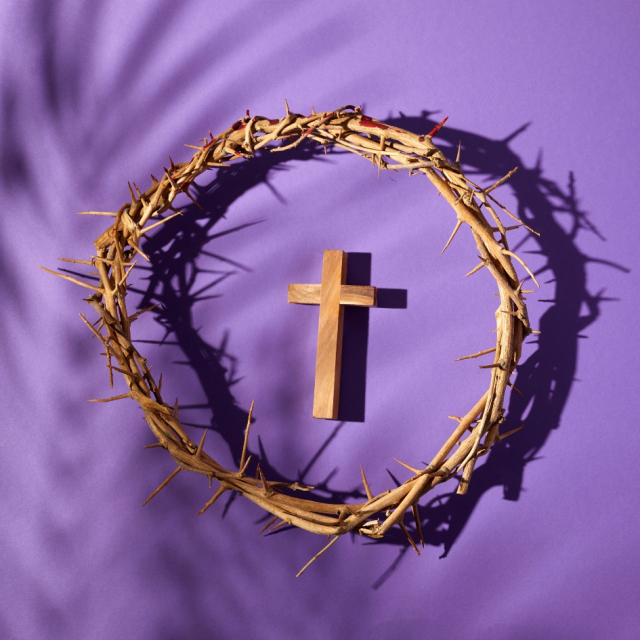Holy Week is one of the most significant religious celebrations in Ecuador, marked by deep devotion and a rich variety of traditions that reflect the country's cultural identity. In 2025, Holy Week will be celebrated from April 13 to 20, beginning with Palm Sunday and culminating with Easter Sunday. Below are the key dates for this week:
- Palm Sunday : April 13, 2025
- Holy Monday : April 14, 2025
- Holy Tuesday : April 15, 2025
- Holy Wednesday : April 16, 2025
- Holy Thursday : April 17, 2025
- Good Friday : April 18, 2025
- Holy Saturday : April 19, 2025
- Easter Sunday : April 20, 2025
Featured Traditions and Celebrations.
During Holy Week in Ecuador, various religious and cultural activities take place that vary by region, but share a deep sense of faith and community. Below are some of the most emblematic ones:
Procession of Jesus of the Great Power.
One of the most impressive events is the Procession of Jesus of the Great Power, which takes place in Quito on Good Friday. This procession brings together thousands of faithful and tourists who walk through the streets of the Historic Center in an act of penitence and devotion. The participants, known as "cucuruchos" and "verónicas," wear purple tunics and represent scenes from the Passion of Christ. It is estimated that around 250,000 people attend this event every year, making it one of the most crowded in the country.
La Fanesca: Traditional Easter Dish.
Gastronomy also plays a fundamental role during this time, with fanesca being the most representative dish. This thick soup is made with a variety of Andean grains and dried cod, symbolizing the country's unity and diversity. Traditionally, fanesca is served on Holy Thursday, but its popularity has led many restaurants to offer it throughout the month of April.
Visit to the Seven Churches.
Another common practice is the visit to the seven churches on Holy Thursday, a tradition that symbolizes accompanying Jesus in the moments before his crucifixion. The faithful visit different temples, praying in each one. This activity is especially popular in cities such as Quito and Cuenca, where the religious heritage offers a unique spiritual and cultural experience.
Tail drag.
On Holy Wednesday, the "Arrastre de Caudas" (Drag of Tails) takes place in the Cathedral of Quito, a ceremony of Roman origin that symbolizes mourning for the death of Christ and the purification of the faithful. The archbishop, dressed in black, drags a large black flag (cauda) along the floor of the temple, blessing the attendees. This ceremony is unique in Latin America and attracts numerous spectators every year.
Representations of the Via Crucis.
In various localities, live representations of the Via Crucis are held, recreating the stations of the Passion of Christ. These dramatizations involve members of the community and are an expression of deeply rooted faith. In cities such as Loja and Riobamba, these representations are particularly prominent and attract numerous faithful and visitors.
Impact on Tourism and the Local Economy.
Easter in Ecuador is not only a religious celebration, but also a period that significantly boosts tourism and the local economy. The festivities attract national and international tourists, generating income for sectors such as hotels, gastronomy and commerce. Cities with a rich historical and cultural heritage, such as Quito, Cuenca and Loja, experience an increase in the influx of visitors, which contributes to the economic development of these regions.
Preparations for Easter 2025.
Looking ahead to Easter 2025, church and municipal authorities are already planning the activities and measures necessary to ensure the success of the celebrations. It is hoped that, with the improvement of health conditions globally, the festivities can take place more normally, allowing for massive participation by the faithful and tourists.
Recommendations for Visitors.
For those planning to participate in the Easter celebrations in Ecuador in 2025, the following recommendations are suggested:
Advance Planning : Due to high demand, it is advisable to book accommodation and transportation well in advance.
Respect for Traditions : Participate respectfully in ceremonies and processions, observing the rules established by religious and local authorities.
Local Gastronomy : Take the opportunity to taste fanesca and other typical seasonal dishes, thus contributing to the local economy.
Safety : Maintain basic personal safety precautions and be aware of instructions from authorities during mass events.
Holy Week in Ecuador is a manifestation of faith and culture that offers a unique experience for both locals and visitors. The diverse traditions, processions, and gastronomic expressions make this celebration one of the richest in meaning and emotions in the Ecuadorian calendar. As Holy Week 2025 approaches, it is anticipated that the country will be ready to welcome thousands of faithful and tourists looking to experience these traditions in an environment full of spirituality and culture.
Participating in the festivities not only allows you to explore Ecuador's historical and religious heritage, but also to connect with cultural roots and experience the solidarity and fervour that unites entire communities during this period. Whether enjoying the procession of Jesús del Gran Poder in Quito, touring churches in Cuenca or tasting fanesca with the family, Holy Week in Ecuador promises to be an unforgettable experience.
Sources consulted :
